Guided Math Small Groups have been such a game changer in my 1st grade classroom! I LOVE the opportunity for differentiation and all of the light bulb moments! 💡💗 Small group math instruction can feel overwhelming, but it doesn’t have to be. Today, I am sharing all of my favorite tips for teaching math in small groups and for making guided math small groups manageable and enjoyable! Read to learn all about how to organize and manage guided math small groups in first grade.
You can read more about our Guided Math Block in 1st Grade in this Blog series!
- Part 1: Getting Started with Guided Math
- Part 2: Launching Guided Math at the Beginning of the Year
- Part 3: The Math Mini Lesson
- Part 4: Small Group Instruction: Everything You Need to Know
- Part 5: Guided Math Rotations
- BONUS: 4 Tips for Managing Math Centers
If you’ve been following along with this blog series, you know that I used to teach math using only whole group instruction. My lessons would be 45 minutes long, I tried to follow our math textbook exactly, and I constantly felt like I was failing my students. My sweet first graders were not engaged. The high kids were bored sitting and waiting for others to catch up and my low kiddos were completely lost. I was trying so hard to reach everyone at the same time which resulted in no one getting exactly what they needed to learn.
I made the switch to a Guided Math structure and saw an immediate improvement in my classroom! My favorite part of workshop teaching is that I was able to meet with all of my students in a small group every single day. In a Guided Math structure, we start with a whole group math mini lesson, then break into our guided math groups for 3 rotations:
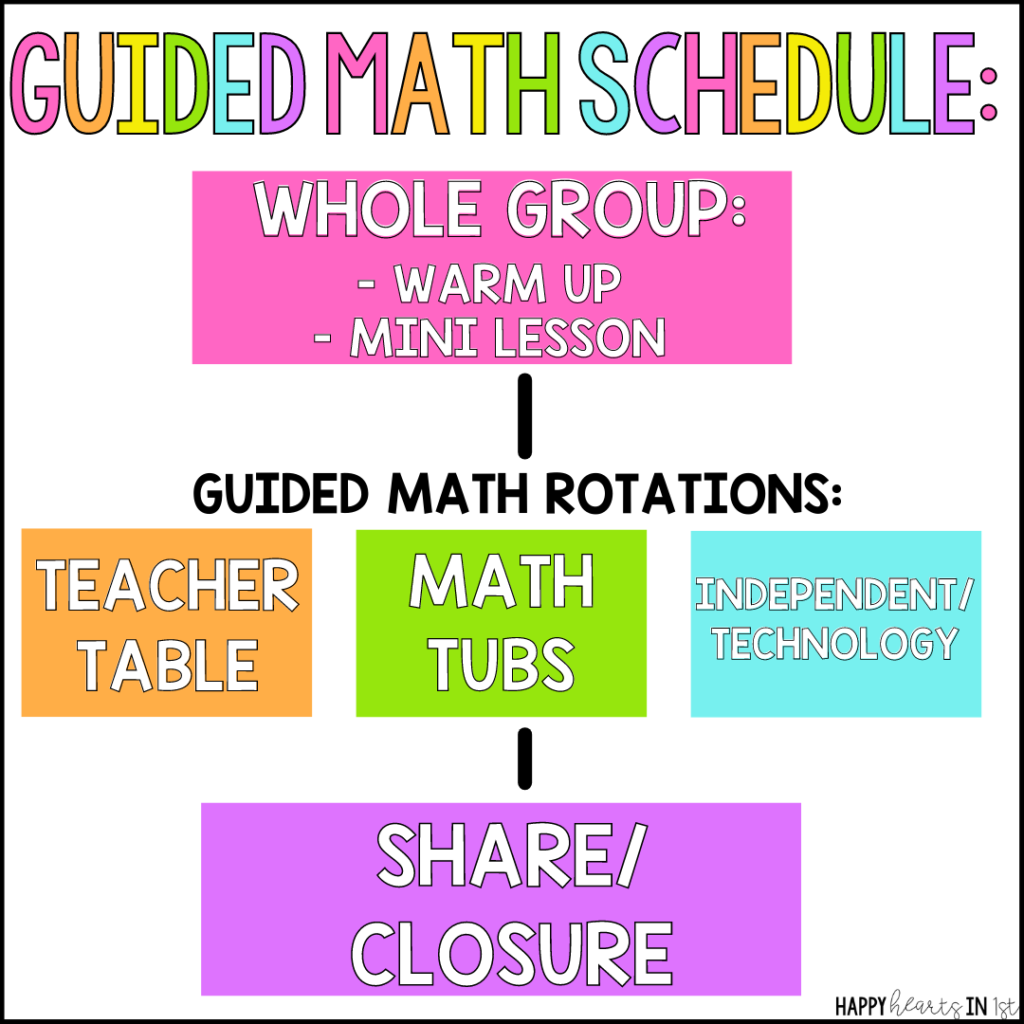
Today I’m going to share with you tips for Guided Math Small Groups. I’ll cover planning, organization, management, activities, and assessment!
Want to get started with Guided Math? Grab my Ultimate Guided Math Planning Binder FREEBIE for:
- Lesson Planning Templates
- Binder Covers
- Math Center Planner
- Small Group Organizers
- Data Trackers
- And MORE!

Why Teach Math in Small Groups?
Guided Math Small Groups allow me to:
- 💗 Get to know my students’ math strengths and needs
- 💗 Differentiate to meet the needs of all my learners
- 💗 Give my students hands-on math experiences in an easy to manage way
When you teach in small groups, it is amazing how much you learn about your students. You can watch them solve problems and listen as they explain their thinking. You can correct any misconceptions right away. Students also learn so much from listening to one another!
It is also so much easier to use manipulatives in small groups. I used to try to use them in whole group and it never worked well. It took forever to pass them out and it was a mess! Small group gives so much more opportunity for hands-on learning!

Grouping My Students for Guided Math Small Groups
In my classroom, I have 3 guided math groups. We have 3 rounds of guided math rotations and I meet with each group every day. In the past, when I have had bigger class sizes, I have also done 4 groups! This works also but I have found 3 to be less overwhelming and makes it easier to fit everything in my schedule.
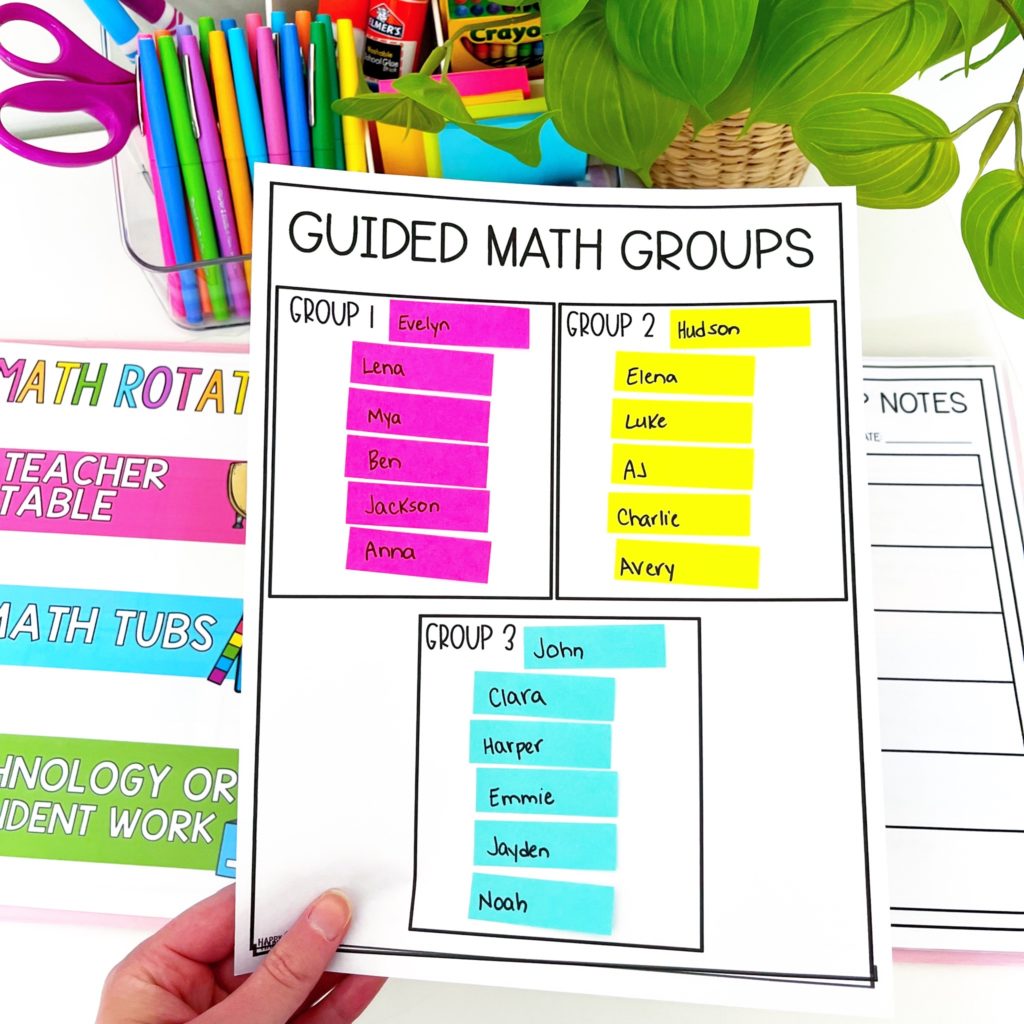
I group my students based on level so this usually means I have an above level group, an on level group, and a below level group. Having homogeneous, or ability-based grouping allows for easy differentiation!
My guided math small groups are flexible and change often throughout the year based on student growth and data. I use our iReady math program to group my students, but you can also use pre-assessments for your math units to group students.
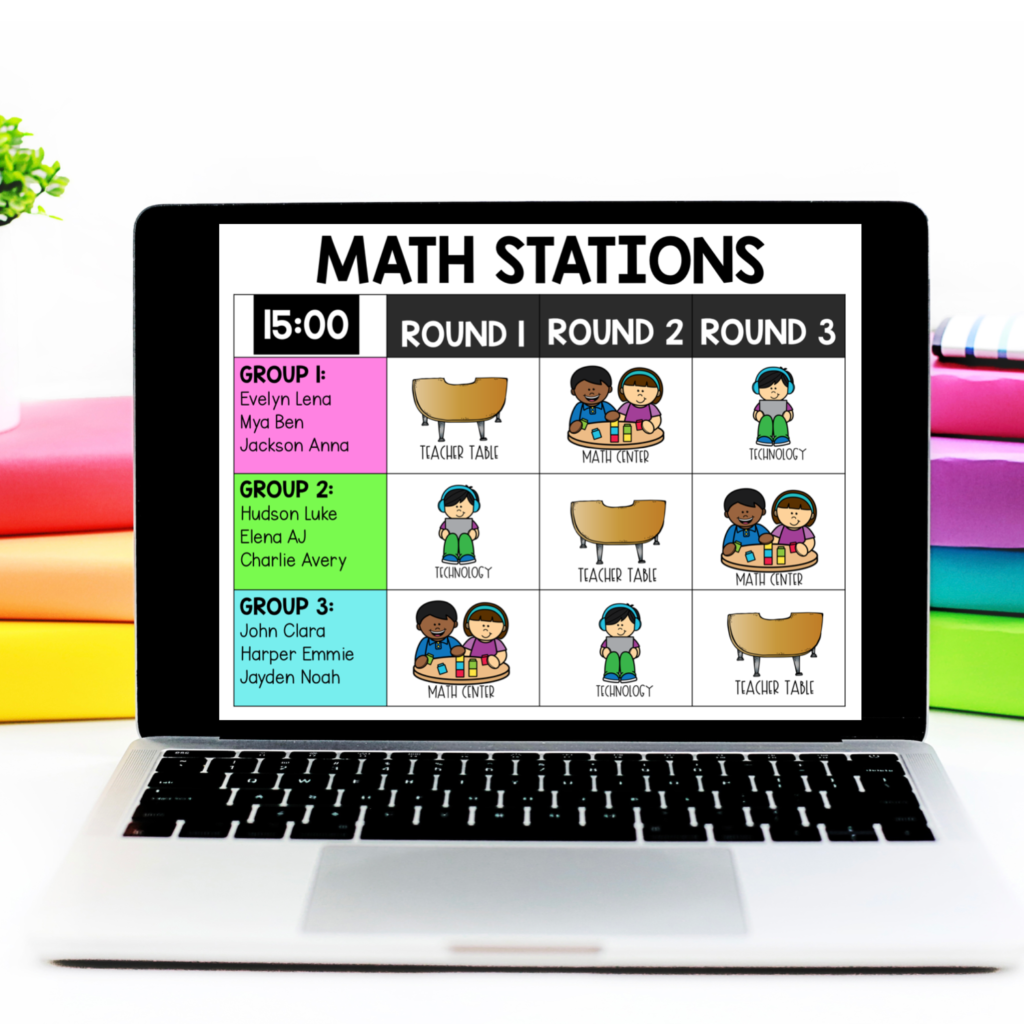
You can find my Digital Center Rotation Slides here!
Guided Math Small Groups Schedule
My math block is about 75 minutes. Here’s how I break down my time so that I am able to meet with each of my 3 groups every day!
- ⭐️ Warm Up 10 Minutes
- ⭐️ Mini Lesson 15 Minutes
- 1️⃣ Small Group 1 15 Minutes
- 2️⃣ Small Group 2 15 Minutes
- 3️⃣ Small Group 3 15 Minutes
- ⭐️ Wrap Up 5 Minutes
That means each group has about 15 minutes with me at teacher table! I have found this is the perfect amount of time for engaging, hands-on practice of math skills! This is also a great amount of time for my other groups to complete their center activities while being independent.
Planning for Guided Math Small Groups
When planning for small groups, it can feel overwhelming. But here’s a secret- you don’t have to write a separate lesson for each group. In my math small groups, we are working on the same standards and usually doing the same activity (Or similar!) The difference is the level of support that each group gets! I am able to give each of my students the scaffolds they need to be successful!
To plan, I quickly jot notes on my Small Group planning page. I DO NOT make detailed lesson plans for each of my small groups! My plans are not fancy! It is important to me to have a system that is manageable. These notes are just for quick planning so I know what materials to pull and what activities to do each day.
Get the planning page for free here!

My number 1 tip for planning for guided math small groups: Let it be easy! You don’t need fancy activities and games every day! Most of my small group lessons are just individual dry erase boards and manipulatives. The important thing is that your group is getting hands-on practice and support from you at their level.
While it’s great to make this time engaging and fun for students, the reason why kids love going to teacher table is because they are getting individualized attention from you and feel successful with math skills!
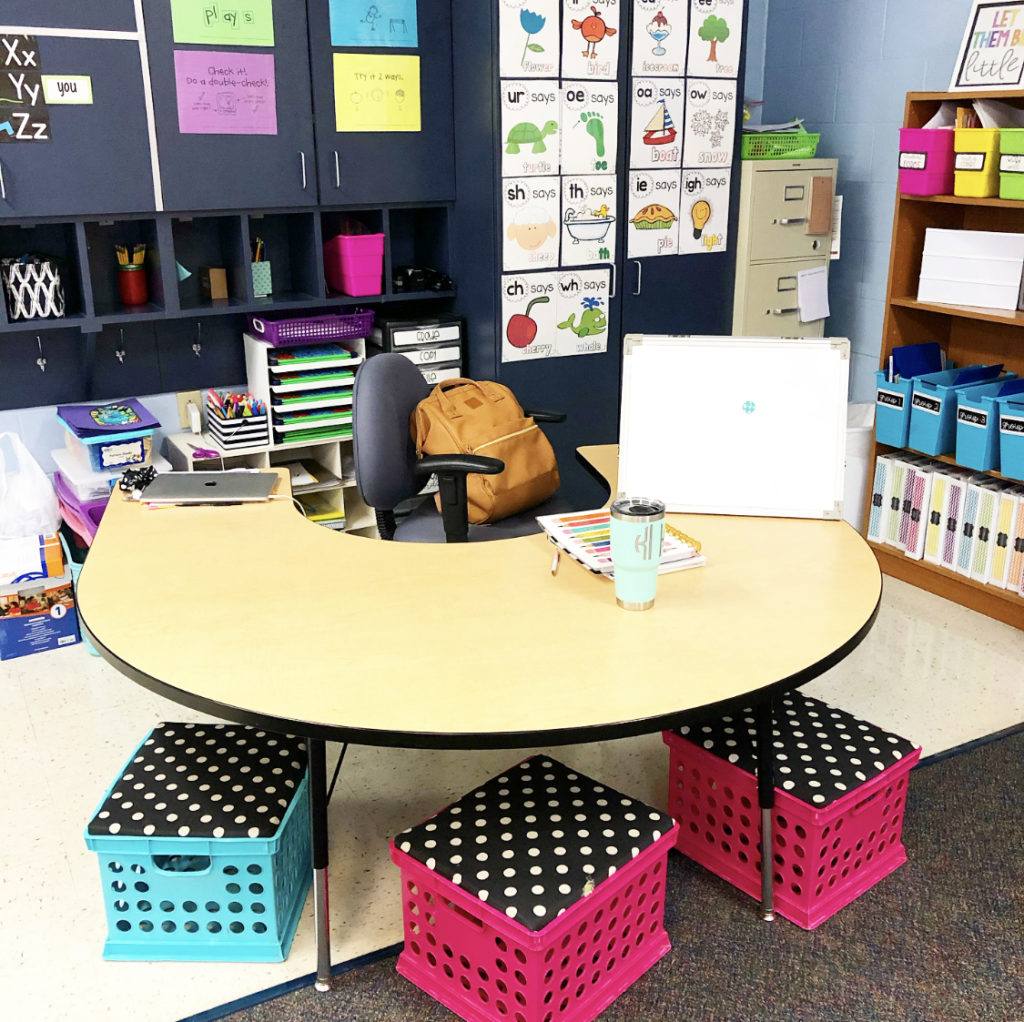
Small Group Organization
For my small groups, I like to make sure we have everything we need at my teacher table ready to go! I have a bookshelf behind my teacher table where I keep all of my small group teaching materials.
I have a few systems for organizing my materials for my Guided Math Small Groups:
- I keep one larger basket for materials and manipulatives that all my groups will be using throughout the week. On Fridays, I fill the basket with the materials for the following week. This is where I keep any manipulatives that my students will need for our small group lessons, laminated materials and activities, and my mini anchor charts.
- Color Coded Bins – I keep the materials needed for each group in bins from Lakeshore Learning. I color code by matching the bin to the group color on our Rotation Board. Any differentiated materials go in these bins! If I know my lower group is going to need number lines to complete an activity, I put them in their group bin.
- Folders – I like to have a folder for each of my groups for any exit tickets or paper activities we are using throughout the week!
- For materials we used every single week (like dry erase boards, markers, and erasers) I have a permanent home behind my small group table! That way I can easily access them.
- I also have a guided math workshop binder where I keep my lesson plans, student skill checklists, and plenty of post-its! Grab it here for free!
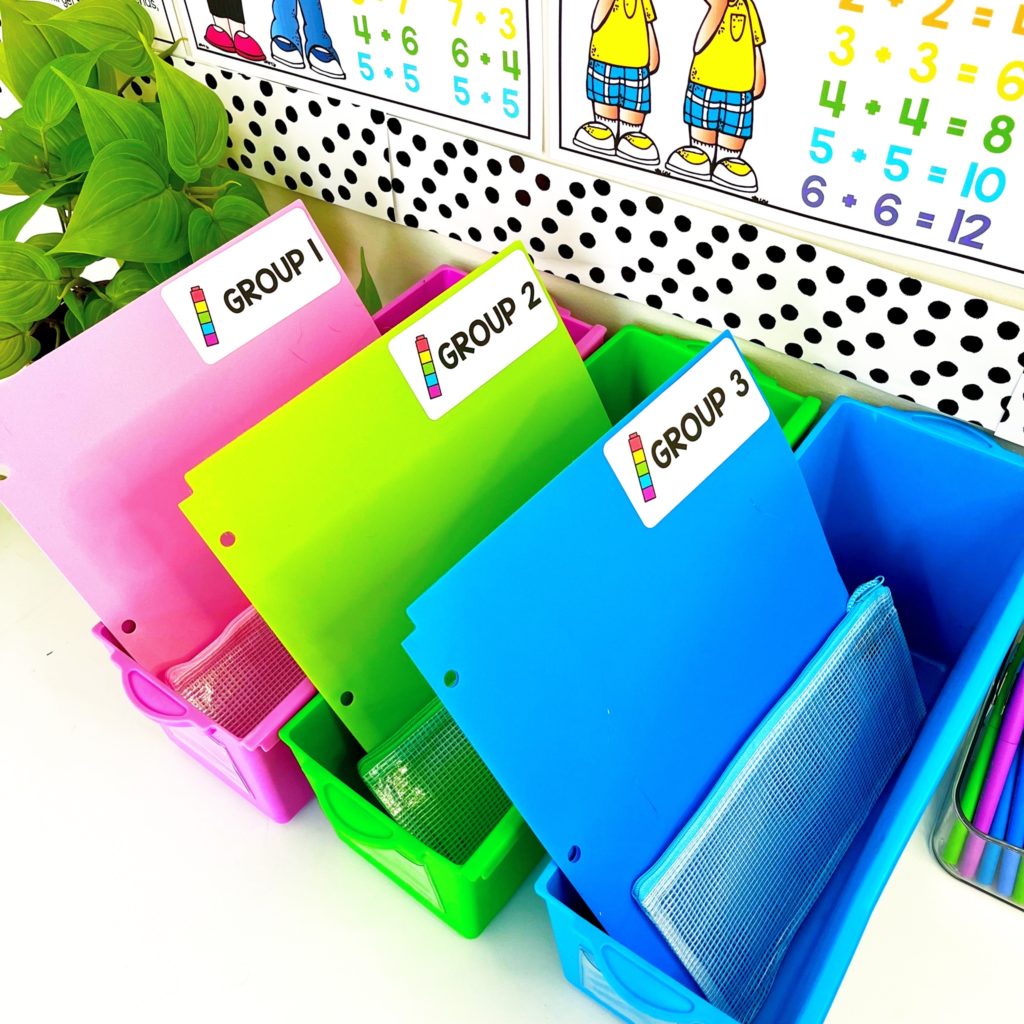
For materials that we are not currently using, I like using these Sterilite containers organized by math unit or skill. I keep them in a cabinet and can easily switch them out when we start a new math unit. I have one cabinet for math and one for reading/phonics materials where I store all of my unit bins!

Prepping for Guided Math Small Groups
I always clean out and restock my small group materials each Friday for the following week! First I check my plans, and grab any manipulatives, math mats, games, or activities I need and put them in my group bins. Then, I make any copies and put them in my group folders.
What do you teach in Small Group?
During my Small Group instruction, I take our math goal that students are introduced to during our mini lesson, and give my students hands-on experiences to meet that objective.
We use a CRA Instructional Approach or a Concrete-Representational-Abstract approach. We always start any new math skill with concrete learning experiences. This means students are working with manipulatives and real world problems. When students are ready, we move to the representation stage. This means we are using drawings, tallies, dots, etc. to model problems instead of concrete objects. Finally, we move to the abstract (using only numbers and equations to solve problems.)
My lower group needs a lot more repeated practice and stays in the concrete stage, while my higher group can move to abstract more quickly. Please note that for some skills, some first graders might not be ready for abstract. Many still need pictures and models to help and that is completely okay!
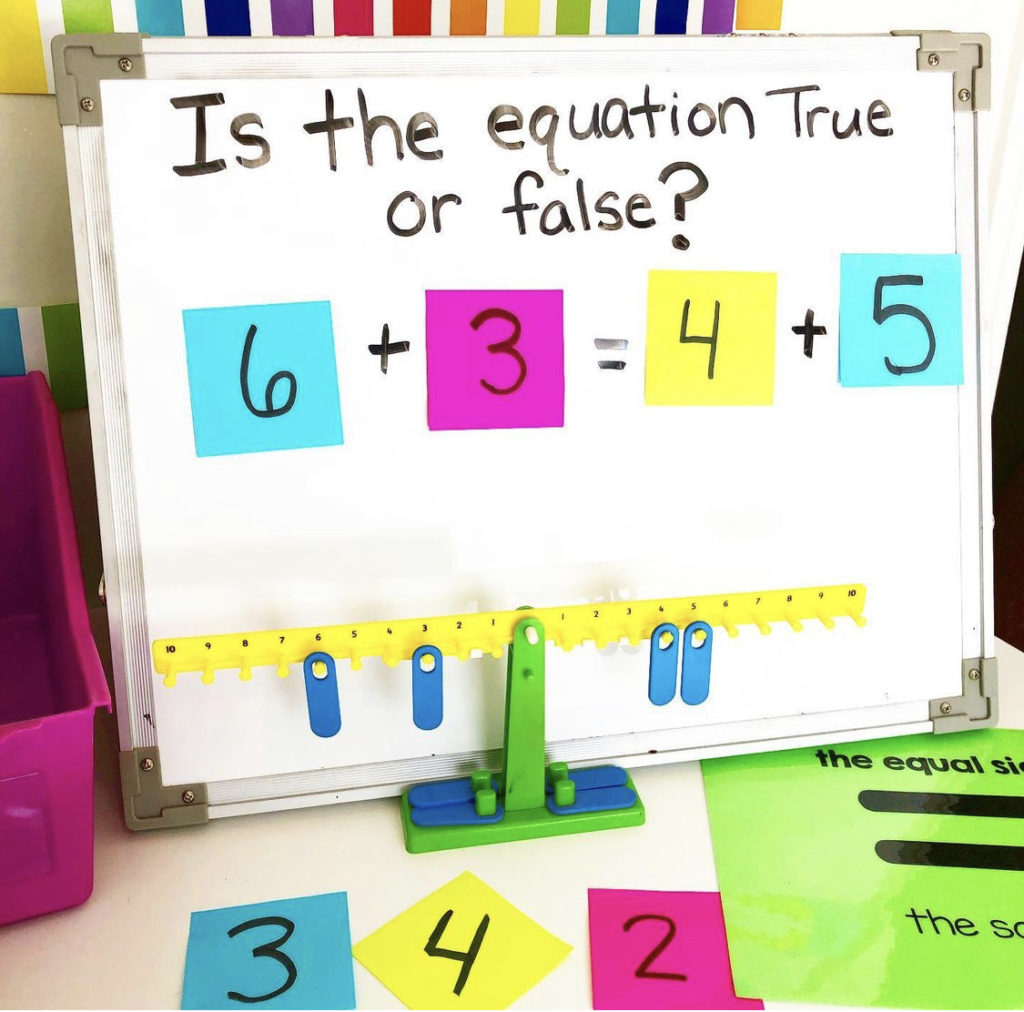
Using Math Mats and Manipulatives
I love using math mats to practice different skills in hands-on ways! I always slip our math mats into dry erase pockets so that students can use dry erase markers and I can reuse them for each group! After using math mats in my small group, I like to use the same activity for a math center. This makes it easy to introduce math centers quickly because students are already familiar with the activity and are able to be independent!
You can grab 6 Addition Math Mat activities for free here!
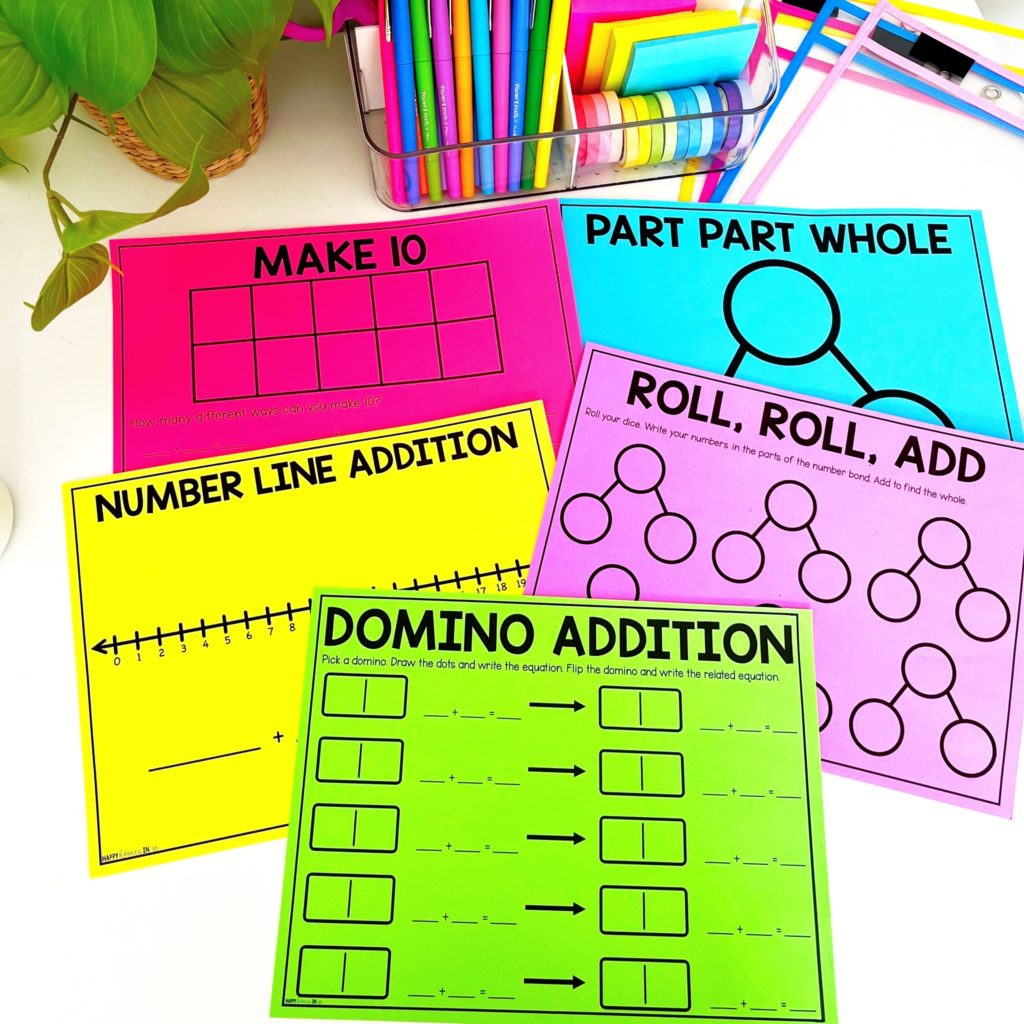
My Favorite Materials for Guided Math Small Groups
- Manipulatives – My small group table always gets messy because this is the time when we are using ALL of the math manipulatives. It is so much easier to work with math manipulatives in small group rather than whole group! I like to sort my manipulatives into pouches or small containers so each student can have their own! This makes clean up easier too! Some of my favorite manipulatives include cubes, counters,
- My Table Top Dry Erase board for our weekly I Can Statement and example problems.
- Dry erase boards and markers
- Math Mats with Dry Erase Pockets
- Mini Anchor Charts
- Task Cards

Find the Visual Directions Picture Cards here!
Guided Math Small Groups Management
Modeling expectations and procedures is SO important for Guided Math to run smoothly. My students know that teacher table time is one of the most important parts of our day where SO much learning happens. It is their job to come to the table ready to work and ready to learn.
I have specific friends in each group who are in charge of passing out materials from our basket and friends who are in charge of collecting and putting materials away when we are finished.
Another important management element is making sure that my friends that are working in other math rotations are able to be independent! I do this by choosing activities that students are familiar with for math centers. All of my math center activities are spiral review so students are able to complete them independently. I’ll share more about this in next week’s blog post about our Guided Math Rotations.
Assessment in Guided Math Small Groups
Most of the assessment that takes place during Small Group math time is through observation. I am able to learn so much more about my students by watching them work in a small group setting rather than during our whole group lessons. Sometimes I jot down notes on my Guided Math Group Notes page or just on a post-it!
Sometimes I will also collect a piece of work we’ve do together in small group or give students a daily exit slip to check for understanding quickly. My favorite way to do quick exit slips is by giving students a post-it note. I write a problem on our dry erase board and have students solve on their post-its before leaving the table! I love that this is a no-prep way to get a quick assessment in!
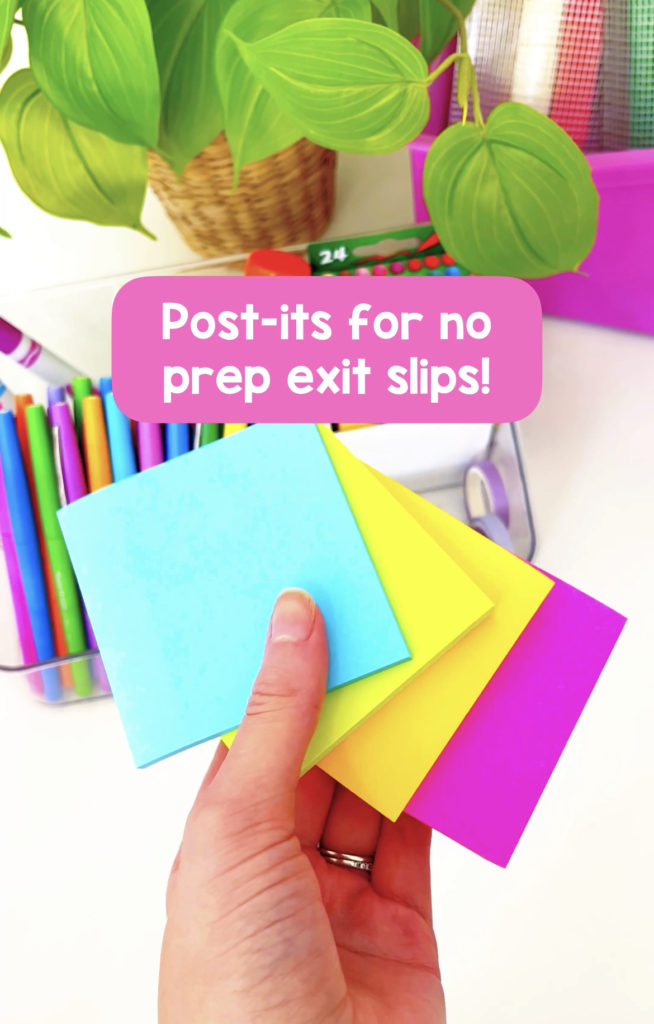
Teaching Guided Math Small Groups is probably my favorite part of the day! I love seeing my students have light bulb moments as they understand new math skills. I love getting to know my students on such a deep level!
Want your Guided Math Plans done for you? Check out:
💗 HAPPY MATH! 💗
An engaging math curriculum that includes no prep mini lesson slides, small group activities, centers, worksheets, anchor charts, assessment, and more! FIND IT HERE!

Do you teach guided math in small groups? Let me know in the comments!
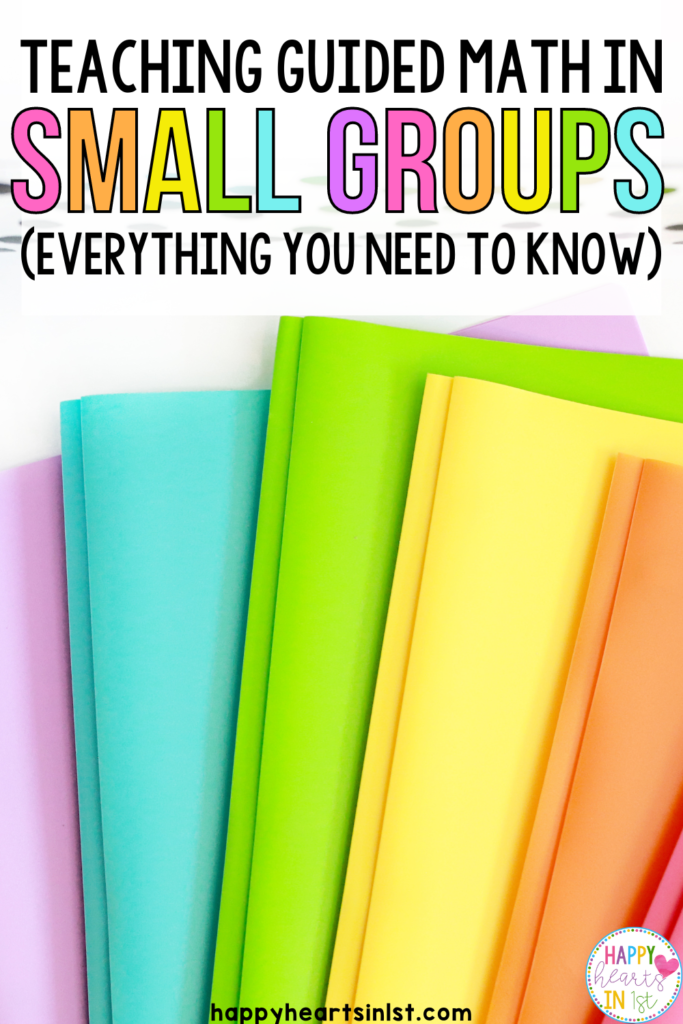
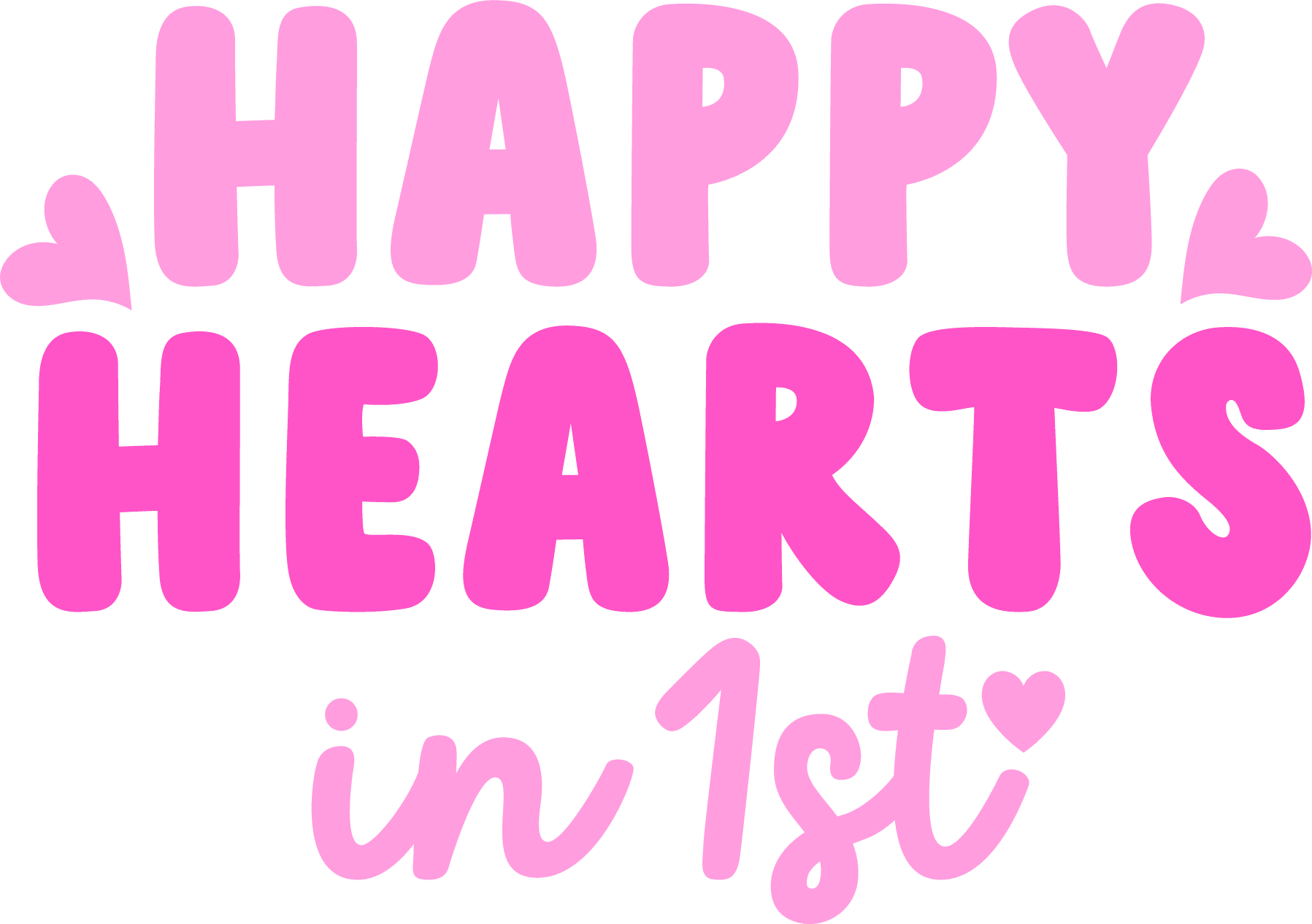

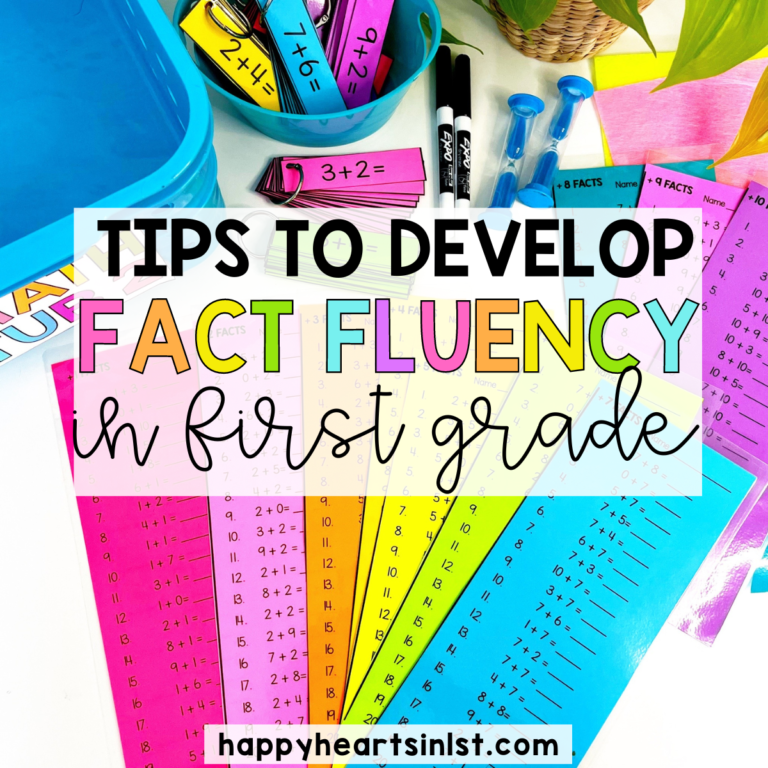
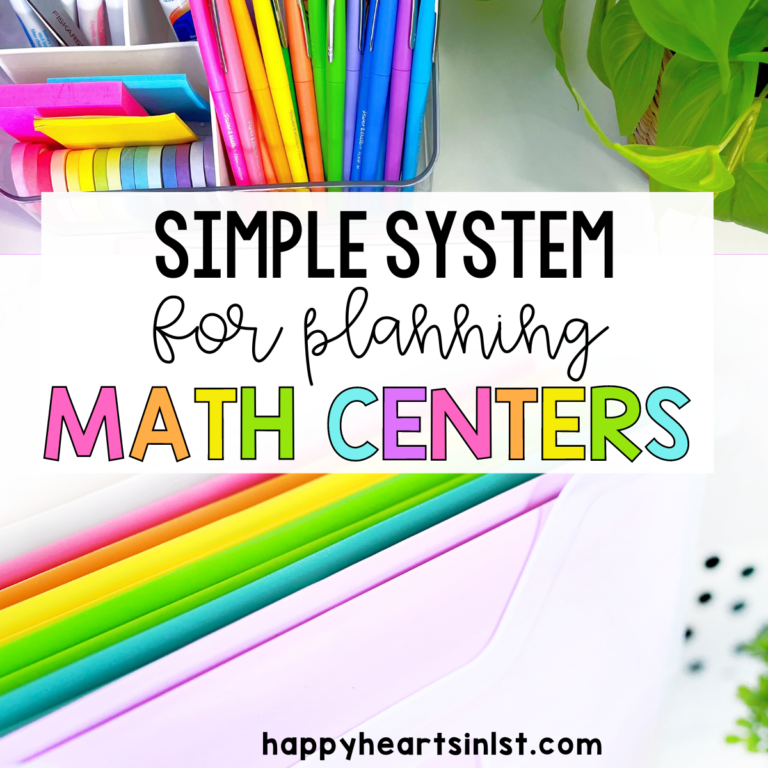

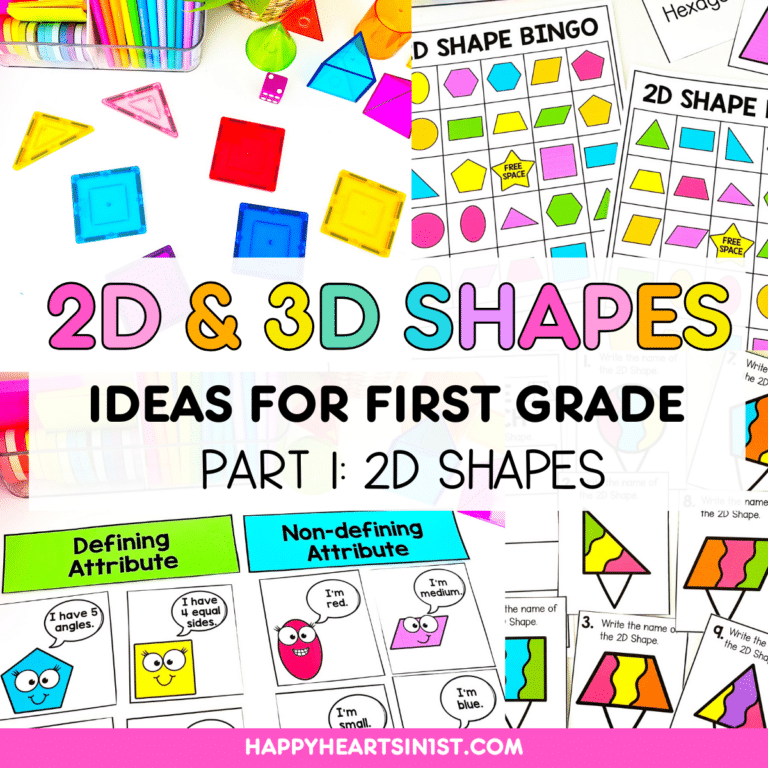
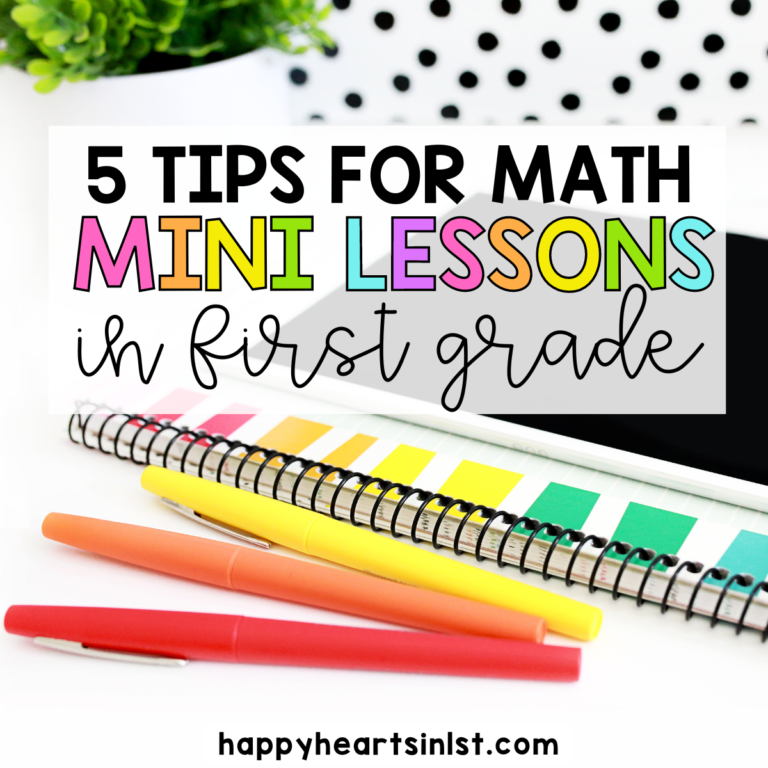
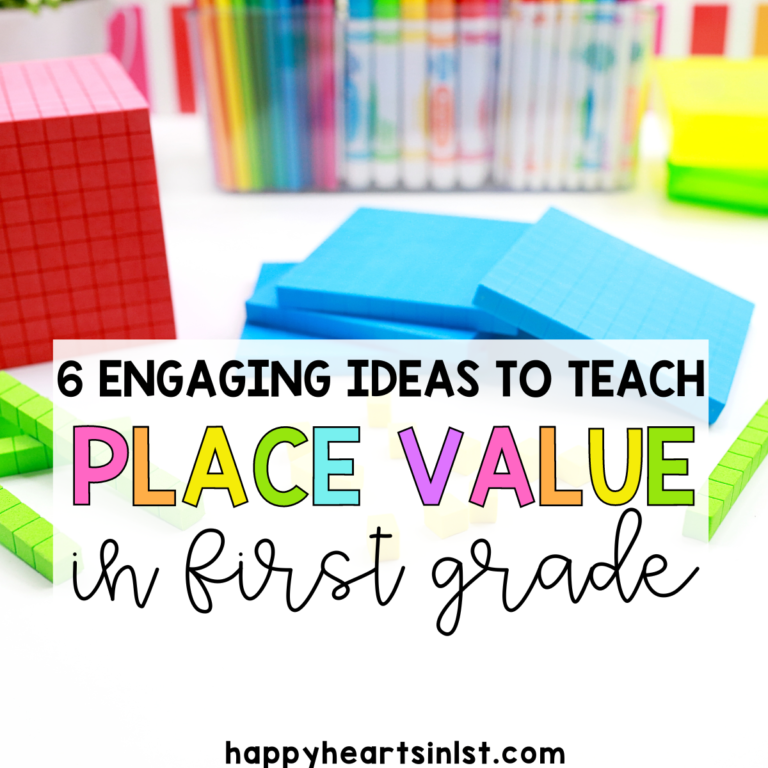

Can you explain how activities in your math tubs that you do every week are different from the math center rotation with activities you’ve previously done?
Hi! I’m not sure what you mean! Our 3 math rotations that we do each day are Teacher Table, Independent Work/Technology, and Math Tubs (These are the hands-on activities!) In our math tubs I use a lot of activities that we have already done together at teacher table. This helps students review skills and helps them to be more independent when they are working at math tubs because the activity is already familiar to them. I hope that answers your question! Feel free to email me if you have more questions! kelsey@happyheartsin1st.com 🙂
I understand. I was thinking that math tubs and math centers were two different things. Thank you!
Do you have Happy Math for Kindergarten?
Not yet, but hopefully soon! 🙂